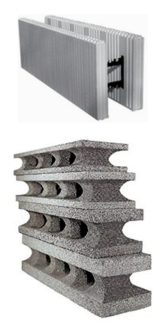There seems to be a lot of talk lately about the use of foam insulation and as in the past it is all just a matter of opinion without any credible test data to back it up. The ICF Industry seems to be dodging more and more bullet’s, every time it proves to be substantially better than the larger more well know conventional types of construction. The truth of the matter is that ICF construction has been proven to be one of the most energy efficient methods of construction to date and it is gaining market share so fast that it is making some of the conventional methods very nervous.
Construction time can be cut in half if done with professionals, the structure has proven it can survive category #5 Hurricanes sustaining 250 mph. winds.
The energy bills on ICF construction have shown up to 75% savings and have made it feasible to introduce Solar and other alternative forms of energy because the BTU requirements are reduced such that we have been able to reduce HVAC by up to 75% as well.
One of the things that our opponents seem to like to mislead the public on is R Value. It is true that most R Values of ICF products are in the low 20’s, but whether by design or just pure ignorance, they omit the fact that the overall wall performance in an ICF can reduce the BTU heat loss (this is the formula that is used to calculate the size of heating and cooling equipment) by almost three times.
HBCD is a standard fire retardant used in many consumer flammable materials, such as clothing, carpet, furniture fabric ect…. What is different about these products is that they are in constant contact with us and we generally wash and clean them regularly. The problem with this is that in these case’s, traces of HBCD makes its way into the ground water and although I have seen no hard data to measure the impact it has on our environment, it is cause for concern. When HBCD is used in the production of construction materials such as EPS made ICF, it is exposed only during the construction phase and is covered both inside and out. When in contact with the ground it is covered with a water proof membrane that does not contain HBCD.
When we combine ICF and alternative energy together, we not only create a concrete structure’s that has been proven to with stand the elements for century’s, but we create a structure that can eliminate our need for fossil fuel when use for new construction. (ouch)!!
Each time I see these articles it makes me wonder who is behind it, who is writing the script? Before we throw the “baby out with the bath water” we should indeed see hard data to prove the case either way.
Murray Snider




Add new comment
To post a comment, you need to register for a BuildingGreen Basic membership (free) or login to your existing profile.